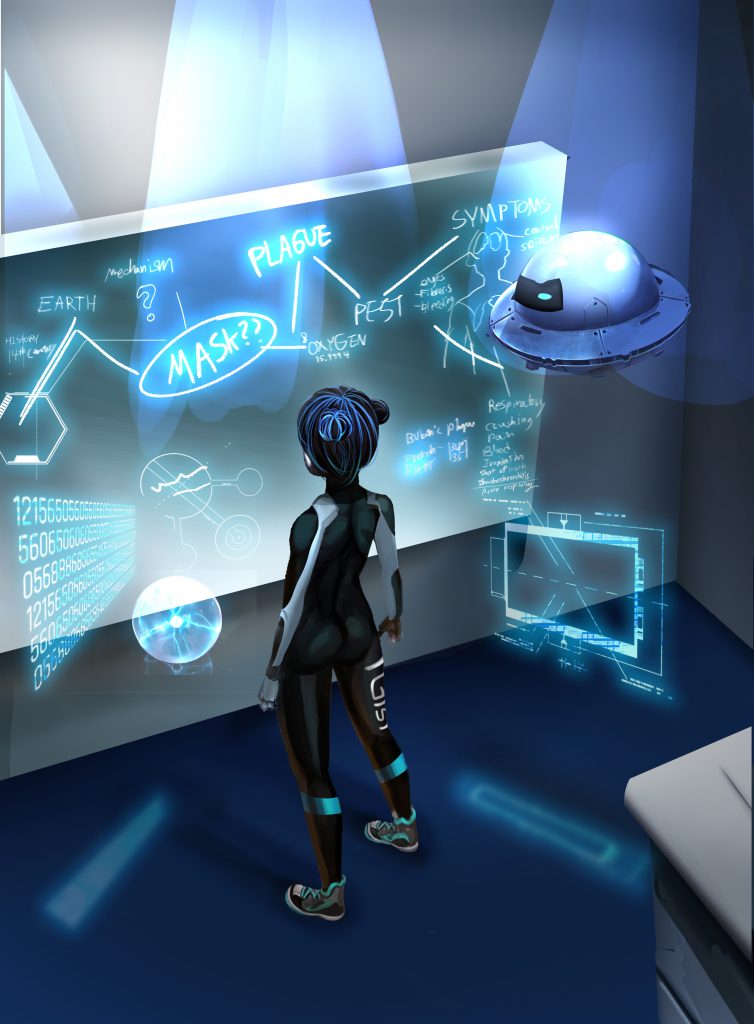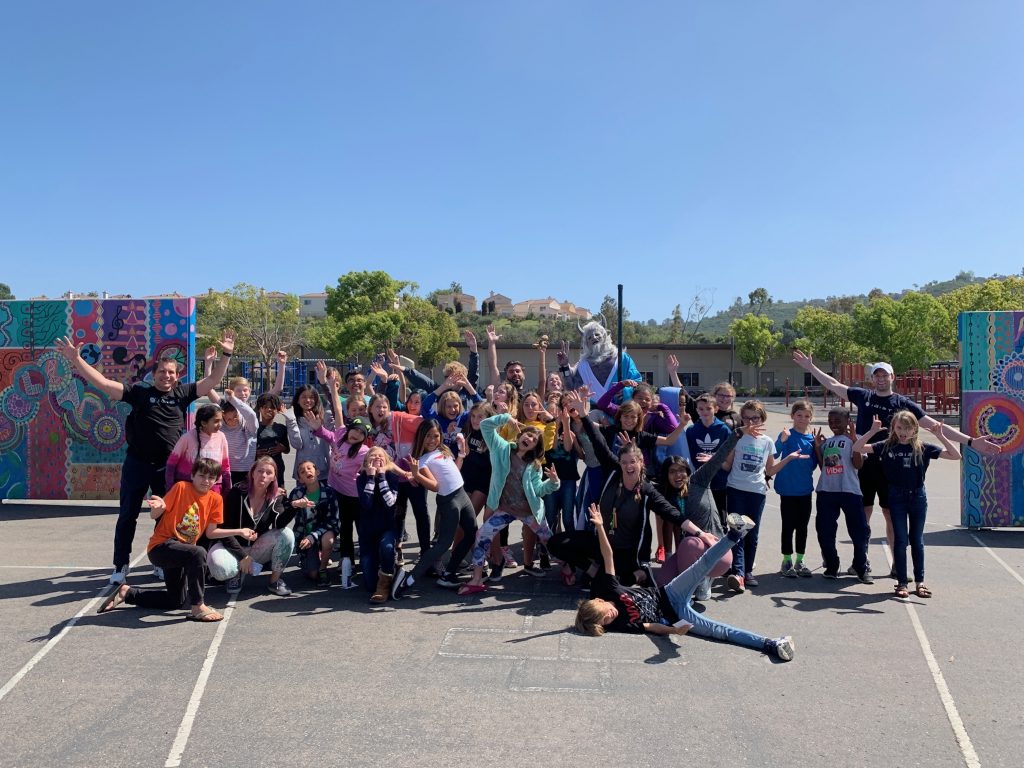You often read in the news today about the state of the Education system, and how often it ‘fails’ children leaving them with the inability to read and write properly. Whether the blame for such allegations falls at the feet of the school, the Government, or parents, who knows. What I can guarantee is the argument as to where to place the blame could go on for hours and hours. There is one individual though who is trying to bring reading into the 21st Century, and I don’t mean by making books available on a Kindle. L.S. Larson is an author who has developed the first immersive digital reading experience and we were lucky enough to catch up with him and chat about his latest book and how it may well encourage children back into reading again.
To get the ball rolling, why don’t you tell our readers a little bit about yourself. What’s your name, where do you come from and what is it that you do?
My name is L.S. Larson. I grew up in Washington State on the Olympic Peninsula in the small town of Forks, which is actually where Stephanie Meyer’s Twilight series takes place. I now live in Arizona and run a company called Axon, which is known for making body cameras and the TASER device for law enforcement and civilians.
And how long have you been writing for?
I wrote my first book 10 years ago after I had just finished my second tour in Ar Ramadi, Iraq, serving as an infantry officer in the Marine Corps. This book called Senator’s Son was about my experience in the Iraq War. In the years that followed, I put most of my time and energy into my day job at Axon and raising my family. My daughters then inspired me to start writing IGIST.
Now tell us a little bit about your latest work, IGIST. It has been described as Star Wars meets Harry Potter, so what genre does it actually fall into and what is the plot of the story?
IGIST is an action/adventure, coming of age, science fiction story set 200 years in the future when Earth has been ravaged by an amoeba-like monster called the plague. The protagonist of IGIST is a young Earthling woman named Emi who sets out to escape the plague-ravaged Earth, make it into her dream school—a lunar-orbit space academy called IGIST (the Intergalactic Institute of Science and Technology), which another reviewer described as “a space MIT”—and win the school’s prestigious science competition by creating an antidote to save her fellow Earthlings from the deadly plague. Emi is determined to become the greatest scientist out of all the best and brightest at IGIST, but in order for that to happen, she has to overcome her habit of doing everything herself and learn how to work as part of a team.

What kind of audience is your book aimed at?
In writing IGIST, my goal was to create a story that would inspire my daughters and hopefully more young women (and everyone) to study STEM so the book is geared toward children ages 9-15. However, we’ve gotten great feedback from high-schoolers and college students as well as parents, teachers, and other adults.
I think it’s safe to say that IGIST isn’t your usual novel with the way it integrates with an application to help make the experience more immersive for the reader. But what was the inspiration for developing the novel in such a way?
My daughters, nieces, and nephews enjoy apps like TikTok and games like Fortnite which do a great job of utilizing the amazing technological capabilities of smartphones. Yet, E-readers and most E-reading apps have shied away from innovating the digital reading experience in favour of a flat, relatively boring platform. My goal with the IGIST app was to create an immersive digital reading experience that took advantage of the smartphone’s incredible functionalities. When I began plotting the first IGIST book and thought up the external force of antagonism, which again is an amoeba-like plague that gobbles up anything in its path, I envisioned this monster popping off the screen, surprising the viewer. In this way, the first “Sputnik” animation was born. These cinematic computer-generated animations transport the reader to the futuristic IGIST universe.
When I finished writing IGIST, I was going to publish it only as an Immersive Novel on iOS and Android, but my friends told me I was crazy and had to publish a traditional version of the book as well. As a technologist, I couldn’t stand the idea of publishing a regular hardcopy book, so I developed some Augmented Reality features that enable the reader to bring the physical book to life. With the app, you can transform the black and white illustrations in the book into colourful animations, for example. You can also discover hidden animations by scanning other parts of the book, like the front cover. Readers can even turn themselves into a hologram and add their favourite characters to their photos with Character Stickers in the IGIST app.
You could say that you’re essentially beginning the evolution of writing as we know it. Do you see more novels, not necessarily from yourself, being written in this same way?
Absolutely! Now that we’ve reinvented the digital reading experience in launching IGIST, the world’s first Immersive Novel, I’d like to expand the IGIST app into a medium that other storytellers can experiment with.

I’ve not had a chance to read the book myself yet, although I do look forward to getting my hands on it. But with it being linked to the app to help bring the story to life, is there also an option to allow readers to alter the story or make choices? Much like some of the R.L. Stine Goosebumps books I read as a kid, or as you do in some video games. If not, would this be maybe another stage of evolution in the development of interactive novels?
In the first IGIST story, readers can actively uncover cool aspects of the IGIST universe, but they aren’t able to alter the characters’ choices in the story, like in Black Mirror’s Bandersnatch, for example. I have been a fan of choosing your own adventure stories since Goosebumps, however. I love deciphering the massive puzzle of outcomes that those experiences require and as a viewer, I love how those experiences empower me and spark a dialogue. I think many interactive stories will eventually make their way onto the IGIST platform. As of now, we’re developing one that takes place in a different part of the IGIST universe from the flagship series.
Being so different from a typical hardback book, I imagine that the process of creating it was very different too. What was it like having to write a story alongside developing an application? And how big is the team that created it?
It was an amazing experience because I was able to collaborate with some really talented artists who continuously inspired me and elevated our story. IGIST Chief Illustrator Yujin Jung is one of the most talented people I’ve ever worked with. She created stunning photorealistic illustrations of chapter scenes with an exceptional amount of detail in the book and in the app. In fact, fans can get a free behind the scenes look into Yujin’s process and concept art by following @IGISTUniverse on Instagram. We also have some super talented software developers, animators, and designers on the IGIST team.
What were the biggest issues you faced during the development of IGIST?
An invaluable member of the IGIST team is Balin, a man-beast character from the story who has temporarily gone back in time and relocated to Earth. Since Balin’s accustomed to life in space, life on Earth can be very challenging for him. It’s not exactly easy for a giant yakman to get around Times Square, for instance.
And to counter that, what has been your proudest moment with IGIST to date, and what do you hope for the future of IGIST?
We’ve had the incredible opportunity of launching IGIST internationally and meeting our fans around the globe has been an absolute blast! We began our tour in Phoenix, Arizona and went across the U.S. from Maui, San Diego, Seattle, and Salt Lake City to Washington D.C. and New York City. IGIST Seattle was my proudest moment since my whole family, including my mother, came out on Mother’s Day weekend. This summer, we’ve gone across the pond to Edinburgh, Nottingham, Oxford, London, and Amsterdam and have some more events coming up in Switzerland, France, and Italy. The book and app are now both available in French and Italian, and we’re in the process of adding more languages. My hope is that IGIST will inspire young people to build the future that they want to live in. My ultimate dream is that the first person who lands on Mars is a scientist who was inspired by IGIST.

Does that mean that there are plans to release more books as part of the IGIST series?
Yes! I’ve mapped out each of the five books in the IGIST series and am currently writing the second book which we’ll be launching in April 2020.
One thing that I really admire about what you’re doing is you are kind of bringing reading to a whole new audience. So many people are now glued to their phones and tablets, and the standard of reading and writing is seeming to become worse in schools. But IGIST is encouraging children to read again, and because it integrates with their smart devices, you’re capturing their attention and they no longer see reading as boring. How does that make you feel, knowing you’re making a positive difference?
In the words of Larry David, pretty…pretty…pretty good! In all seriousness, it’s been phenomenal to see people, especially children, who historically haven’t been readers, actually enjoy IGIST and become excited about reading through the Immersive Novel experience. At our IGIST launch event in Maui, Hawaii, we had a father and son drive across the island to attend the event. There, the father confided in me that he didn’t know how to read and IGIST was the first book that his son read.
You recently took part in an interview on BBC Radio Oxfordshire, and another of the BBC’s radio stations, BBC Radio 2, recently held their 500 Words competition, which encouraged children to write short stories and submit them with the chance to have them read by some of their favourite celebrities at Windsor Castle. I was fortunate enough to listen in to the final and the stories were great. How important do you think it is to encourage children to read, and also express themselves in the form of creative writing? Whether it be by competitions such as 500 Words, or helping immerse them with interactive novels like IGIST?
I think it’s really important to encourage children to read because reading, like going to class, is one of the best ways to acquire knowledge, and knowledge is what empowers people to break down a problem and invent a solution that no one else has deemed possible. I also think it’s very important to encourage children to express themselves creatively, whether it be through writing or another art form. I recently saw some great IGIST fan fiction on Wattpad. In their story, the author conveys the choices that they would make if they were a student at IGIST. To see fans lend their perspectives to the IGIST universe makes my heart soar like a hawk. And all the contestants in 500 Words deserve a huge congratulations. That is a fantastic opportunity for young writers, and writing competitions, in general, are a great way for writers to improve their craft and gain exposure.

And before we finish up with a final question, what advice, if any, would you offer to young people who want to become authors and have their work published?
You’ve got to be disciplined. I went to college on an NROTC scholarship and that meant while everyone else was out partying, I had to maintain my routine of going to sleep at a reasonable hour and getting up early. Cut to 15 years later: I still get up every morning at 4:30 AM and write for a few hours. It’s my favourite time of the day. If you’re serious about writing, then you have to do the work. Ideally, you spend a few hours every day working on a project. If you’re not sure what to write about, Google creative writing prompts and you’re bound to find something fun. If you’re just starting out, what you’re writing isn’t as important as getting your writing muscle the reps it needs to grow. There are many great books about writing, but if I had to pick a few I’d recommend reading Robert McKee’s Story, Stephen King’s On Writing, Steven Pressfield’s The War of Art, and John Gardner’s On Becoming a Novelist. If you’d like some more recommendations or other advice, feel free to email me at lsl@igist.com.
And finally, a fitting question to finish on I think; what is your favourite book from your own childhood?
Alexandre Dumas’ The Count of Monte Cristo.
We’d like to thank L.S. Larson for taking the time out of his busy schedule to chat to us about IGIST. He is currently touring parts of Europe with IGIST, most recently in Oxford where he was interviewed by the BBC, having showcased the novel across the States previously. We’ve posted all the links you’ll need to check out IGIST below, and keep your eyes peeled as we’ll have a review of it up shortly once the book has arrived and we’ve sunk our teeth into it (not literally).
Links:
- The Official IGIST Website: https://igist.com/
- Link to the App on the iOS App Store: https://itunes.apple.com/us/app/igist/id1356212429?ls=1&mt=8
- Link to the App on the Google Play Store: https://play.google.com/store/apps/details?id=com.igist.core
- Link to the Book on Amazon (£5.53 on Kindle, £11.80 Paperback – Prices correct as of 24/06/2019): https://amzn.to/2XOnQFJ
- Link to L.S. Larson’s radio interview with the BBC (starts at 8:25): https://www.bbc.co.uk/sounds/play/p07b6vz5
- Facebook: https://www.facebook.com/igist.studios/
- Twitter: https://twitter.com/IGIST_Studios
- Instagram: https://www.instagram.com/igist.studios/
- YouTube: https://www.youtube.com/channel/UCgHsvj14Y08OLgDRCU5Ro3g/featured?view_as=subscriber
And of course, if you want to check out more of our interviews, just click HERE.